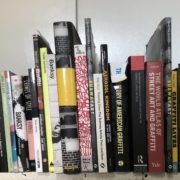Three cheers for divisions in learned societies
One of the principle concepts in the field of cell biology is mitosis.
This natural process occurs when a cell or organism splits into two.
A similar situation happens in many learned societies (e.g., American Sociological Association, American Political Science Association, etc.).
Over time, as knowledge accumulates and new people study a phenomenon, they may feel that their interests would be better served if they joined or formed a brand new unit of a learned society under the auspices of the parent organization.
Along with likeminded members, they may start by holding their own panels, and progress to constructing a website, producing a newsletter or journal, and holding their own social. Down the road, they may even split away from the host organization.
Creating and managing a subdivision, especially if it’s done in a professional manner, can be a lot of time consuming work for individuals and groups considering this option. Nevertheless divisions in major learned organizations provide numerous benefits both for the parent organization and for individual members.
For the large learned organization, it is a way to devolve some the responsibilities for communicating, educating, and socializing members into the wider learned society and professional culture of the profession.
Just like extracurricular groups in high school and universities, subdivisions of learned organizations often:
• Minimize alienation felt by new and existing members of the larger organization. People who are new to the learned society may find a subdivision to be an easier point of access to the larger learned society. They may find others similar to themselves much quicker, than by bouncing around the larger learned society.
• Enable members to gain valuable leadership and management experience in a low risk environment. Most subdivisions have lots of openings for positions that few members want to do (e.g., treasurer, secretary, etc.). Much of the experienced gained in working in these positions are transferable to academic positions like chairs of departments, assistant deans etc.
• Assist in the development of members and the profession.
• Facilitate another opportunity for the mentoring of graduate students and junior faculty
• Allows additional publication opportunities (i.e., outlets) to members, especially junior ones, like graduate students.
• Experiment with new forms of member engagement that might be more challenging for the parent organization to accomplish. In this case smaller typically means nimbler.
Divisions are not perfect, but their benefits usually outweigh any negative arguments against their establishment. And when a division of a learned organization outlives its utility, they will eventually be shut down.
Photo
Painting “Hip, Hip, Hurrah! Artists’ Party in Skagen” (1888),
by Peder Severin Krøyer,
in Gothenberg’s Museum of Art.











